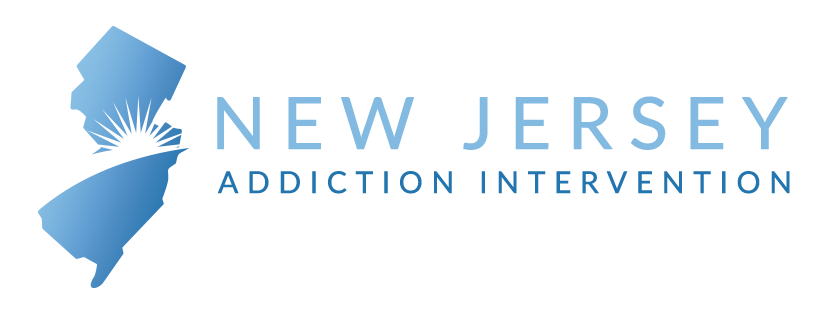Sudden Sniffing Death Syndrome, or SSDS, refers to sudden or abrupt death caused by inhalant abuse. If you or a loved one abuse inhalants, SSDS is a very real risk that could happen to you if you don’t seek treatment for substance abuse.
Reach out to the addiction specialists at New Jersey Addiction Interventions today to find support for yourself or a loved one.
What is Sudden Sniffing Death Syndrome (SSDS)
Inhalant drugs are substances that are typically sniffed or “huffed” to produce mind-altering effects. Inhalants contain numerous toxic chemicals that are capable of producing sudden death. When these substances are inhaled, the chemicals are rapidly absorbed into the bloodstream through the lungs, leading to a quick onset of effects.
Inhalants can produce a range of effects, including euphoria, dizziness, hallucinations, and impaired coordination. However, they can also cause serious health consequences, including organ damage, brain damage, and even sudden death from cardiac arrest or asphyxiation.
Abrupt death that is attributed to inhalant abuse is known as Sudden Sniffing Death Syndrome (SSDS).
Sudden Sniffing Death Syndrome (SSDS) is a rare but potentially fatal consequence of inhalant abuse. It occurs when inhaling certain volatile substances leads to irregular heart rhythms (arrhythmias), which can result in sudden cardiac arrest and death, even in otherwise healthy individuals.
What Causes Sudden Sniffing Death Syndrome?
While SSDS occurs as a result of inhalant abuse, the syndrome isn’t completely understood because of how little it has been studied and how quickly death can occur. SSDS can occur in a matter of seconds, and the heart can stop beating before the person even finishes inhaling it.
Typically, SSDS is attributed to heart failure. Inhalants deprive the body of oxygen, and without oxygen, the heart may begin beating erratically or stop functioning as it should. Inhalants can also make the heart more sensitive to the effects of adrenaline and other chemicals, causing sudden and dangerous spikes in heart rate.
In addition to heart failure, SSDS is sometimes caused by asphyxiation or suffocation during inhalant abuse. Asphyxiation occurs when the body can’t breathe properly or lacks oxygen in the air, while suffocation specifically refers to being deprived of air by external means.
Anyone can die suddenly from inhalant abuse, however, those who have a history of breathing or heart problems may be at an increased risk. While any type of inhalant drug can cause SSDS, butane, propane, and aerosols are most often responsible.
Commonly Abused Inhalant Drugs
Inhalants include a wide range of household and industrial products that contain volatile chemicals. Examples of inhalants include:
- Solvents – These are liquids that become gas at room temperature, such as gasoline, paint thinner, nail polish remover, and glue.
- Aerosols – Sprays that contain propellants and solvents, like spray paint, hair spray, and deodorant.
- Gasses – Chemical gasses found in household or commercial products, like butane lighters, propane tanks, and nitrous oxide (laughing gas).
- Nitrites – These are prescription medications for chest pain but are sometimes abused for their intoxicating effects. Examples include amyl nitrite and butyl nitrite. They are also found in room odorizers and leather cleaners.
Due to their accessibility and legality, inhalants are commonly abused, particularly among adolescents and young adults. In 2021, about 2.2 million people reported using inhalant drugs and about 335,000 had an inhalant use disorder.
How to Prevent Sudden Sniffing Death Syndrome
Many harm reduction strategies can be used to reduce potential harms associated with substance abuse, but the only way to prevent SSDS is to avoid inhalant abuse altogether.
SSDS can occur even if medical care is sought. SSDS occurs within seconds or minutes, often before people can seek help. Paramedics can rarely arrive in time to save a person who is experiencing this phenomenon. According to an article published in the Journal of Emergency Medical Services, resuscitation is highly unlikely in cases of SSDS.
Up to 22% of people who die of SSDS have no prior history of inhalant abuse. Additionally, up to 56% of all deaths associated with inhalant abuse were attributed to SSDS.
Since inhalant abuse is most common in teens and adolescents, parents must take action to prevent it from occurring in their homes. Parents should monitor household products that can be abused as inhalants, such as solvents, aerosols, and gasses. Keep these substances out of reach and properly secured. Additionally, parents should communicate openly with their children about the risks of inhalant abuse.
Additional Dangers of Inhalant Abuse
Whether it’s a single use or repeated, long-term inhalant abuse, misusing these substances is incredibly dangerous. Common adverse side effects of inhalant abuse include:
- Loss of control over body movements
- Nausea
- Vomiting
- Headache
- Drowsiness
Repeatedly inhaling the chemicals and toxins found in inhalants can damage the body. Potential dangers of inhalant abuse include:
- Brain damage
- Delayed behavioral and cognitive development
- Hearing loss
- Bone marrow damage
- Liver and kidney damage
- Heart failure
- Lung damage
- Nerve damage
- Increased risk of injury and accidents
- Dependence and addiction
- Social and behavioral problems
- Mental health problems including depression, anxiety, and psychosis
Signs of Inhalant Abuse (Huffing)
Inhalant abuse, also known as huffing, is important to identify early on. Recognizing the problem and seeking treatment can help individuals avoid the potential dangers. Common signs of inhalant abuse include:
- Slurred speech
- Drunk or disoriented behavior
- Nausea
- Loss of appetite
- The smell of chemical odors on the person’s breath or clothing
- Paint or stains on their face, hands, or clothing
- Hiding spray paint, solvent canisters, or chemical-soaked rags
- Poor attention span
- Irritability
- Depression
- Lack of coordination
Find Treatment for Inhalant Abuse and Addiction
If you or someone you love are struggling with inhalant abuse, know that you are not alone. New Jersey Addiction Interventions is a community of passionate individuals who understand the disease of addiction and are equipped with the knowledge and skills you need to get sober. To learn about your treatment options or to get started with a confidential, risk-free assessment, please contact us today.
Medically Reviewed: February 16, 2024

All of the information on this page has been reviewed and verified by a certified addiction professional.

